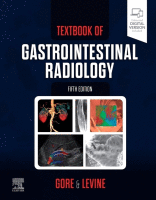Physical Address
304 North Cardinal St.
Dorchester Center, MA 02124

Metastases Gastric and duodenal metastases are found at autopsy in less than 2% of patients who die of carcinoma. Most of them are blood-borne metastases, but the stomach and duodenum are also involved by lymphatic spread or by direct extension…

Gastric Carcinoma EPIDEMIOLOGY Gastric carcinoma has striking geographic variations, with the highest reported incidence in Japan. However, Japanese who migrate to the United States have a significantly lower incidence of gastric cancer than those living in Japan, so other factors…

Between 85% and 90% of neoplasms in the stomach and duodenum are benign. About 50% are mucosal lesions and 50% are submucosal. Most benign neoplasms are discovered fortuitously on barium studies or endoscopy, but large or ulcerated tumors may cause…

Erosive Gastritis Erosions are defined histologically as epithelial defects that do not penetrate beyond the muscularis mucosae. Although gastric erosions are rarely diagnosed on single-contrast upper gastrointestinal (GI) studies, they are detected on double-contrast studies in 1% to 20% of…

Gastric or duodenal ulcers (peptic ulcers) are thought to occur in about 10% of adults in the West. Peptic ulcers are important not only because of the frequent occurrence of pain or other symptoms but also because of the morbidity…

General Principles Radiologic evaluation of the postoperative esophagus requires an understanding of the operative procedures and normal postoperative findings. Radiographic studies are performed in these patients for three general purposes: (1) to define the postoperative anatomy and establish a baseline;…

Radiographic Technique The gastric cardia is notoriously difficult to evaluate on single-contrast barium studies because the overlying rib cage prevents manual compression of the gastric fundus. If the fundus is not adequately distended, gastric folds may obscure surface detail. If…

Mallory-Weiss Tear PATHOGENESIS A Mallory-Weiss tear is a linear mucosal laceration at or near the cardia caused by a sudden, rapid increase in intraesophageal pressure due to violent retching or vomiting after an alcoholic binge or protracted vomiting for any…

Metastases SITES OF ORIGIN Esophageal metastases are found at autopsy in less than 5% of patients dying of cancer. Carcinoma of the gastric cardia or fundus often invades the distal esophagus, accounting for about 50% of these metastases. Less commonly,…

Esophageal carcinoma comprises less than 10% of all gastrointestinal (GI) tract cancers. Nevertheless, it is a deadly disease, with an overall 5-year survival rate of only about 15%. At one time, most esophageal cancers were thought to be squamous cell…